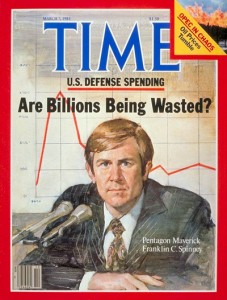In the late 1980s, the leaders of the West promised Soviet General Secretary Mikhail Gorbachev that they would not expand eastward if the Soviet Union pulled out of Eastern Europe and ended the Cold War. That promise was not kept. A triumphal West stuck it to the Soviet Union’s greatly weakened Russian successor by incorporating the former Warsaw Pact countries into NATO and the EU. But that was not enough to sate the lust of the neo-liberal triumphalists in search of a new imperium. Their next move tried to incorporate the Caucasus country of Georgia — a country more a part of Central Asia than of Europe — into the West’s sphere of influence. That turned out to be a bridge too far; the Russians intervened militarily to put a stop to the lunacy.
But events in the Ukraine suggest that stop may have been viewed as a temporary speed bump on the pathway to rolling back Russia’s geography to the years of Ivan the Terrible.
Ukraine may be descending into chaos, and some triumphalists in the West are again tempted to meddle and fan the fires of chaos and revolution, perhaps with a near-term aim of a partitioning the Ukraine along its historic Orthodox-Catholic fault line. Seaumas Milne describes the chaotic state of play in Ukraine in this commentary in the Guardian. In so doing, Milne shows how the west is fueling revanchist fascism. Note the familiar role being played again by meddlers like Nato Secretary General Anders Rasmussen and Senator John McCain. According to Milne, they are encouraging the rise of Ukraine’s nascent fascism and rising instability to roll back Russia’s influence among its immediate neighbors. But the Ukraine, like Georgia, is too close to home. Ukraine is likely to prove another bridge too far that triggers a Russian reaction by the wily Mr. Putin (the man, who recently intervened to stop the US from going to war in Syria). And Putin’s reaction may well be portrayed as a reason to restart the Cold War with Russia.
Combine these efforts in the Ukraine with the ongoing push to start a Cold War with China (Obama’s Pacific pivot and the Navy-AF budget plan for the so-called Air-Sea Battle) and the halcyon years of ever rising defense budgets may be again in the political offing, triggered by yet another wave of Cold War hysteria. But this time, the MICC’s (Military-Industrial-
This chart gives you an idea of the stakes. The figure compares the defense budget in current dollars to its portrayal in inflation-adjusted dollars, either by using GDP deflators or by using the Pentagon’s self-serving defense deflators.
Bear in mind, the Pentagon only started to account for inflation in the early 1970s. Its historical deflators for periods before 1976 are the fanciful concoctions of bureaucratic apparachiks in the office of the Pentagon’s comptroller. But there is method to their madness. The Comptroller’s calculations serve the goal of making past defense budgets look much higher relative to current budgets. This fanciful depiction creates the false impression that current budgets are lower relative to past budgets than is actually the case. Put another way, the Pentagon’s deflators assume the rate of price inflation affecting Pentagon’s budget is higher than the general rate of inflation for the economy as a whole. This assumption, of course, makes it far easier to hide the real effects of cost growth and outright fraud, waste, and abuse over time by attributing part of it to inflation, which is said to be beyond the MICC’s control.
The chart puts this scam in perspective. Compared to the two lefthand charts, the Pentagon’s deflators (i.e., the righthand graph) make the current defense budgets appear to be less of a departure from past budgets. The right hand chart is the one that the Pentagon briefs to Congress and the press dutifully regurgitates. It implies the current defense budget and future plans are less of a distortionary burden on the economy than is actually the case. (Readers interested in learning more about the inflation scam are referred to this report for a particularly outrageous case study documenting how the Pentagon scammed the Congress and the America people into believing the Reagan spendup was less wasteful than it really was.)
The charts give you an idea of the golden cornucopia awaiting the Military – Industrial – Congressional Complex (MICC), if its proponents can start a new Cold War. Anyone who doubts the possibility of the MICC’s capacity to pull this off, need only use these charts to think about (1) the durability of the so-called “peace” dividend accompanying the end of the Cold War in 1990 and (2) how the MICC exploited the horror of 9-11 to power boost the defense budget to levels undreamed of by the threat inflators during the worst days of the Cold War or Vietnam. Just try to think about what a new wave of cold-war hysteria could trigger.
When asked to pony up the money to pay for a new Cold War (and to sacrifice other programs like Medicare and Social Security), American taxpayers would be well advised to try to understand how future defense budgets compare to those of the past. They would be better served if everyone agreed to use the GDP inflator (or something like it) when trying to remove effects of inflation from a given budget level. The GDP deflator assumes the Pentagon’s budget is a part of the larger American economy. The alternative is to continue using the Pentagon’s deflators, which assume the economics of the MICC are a special place where the self-interested parties making up the MICC should make up the rules that establish the terms of political debate.




